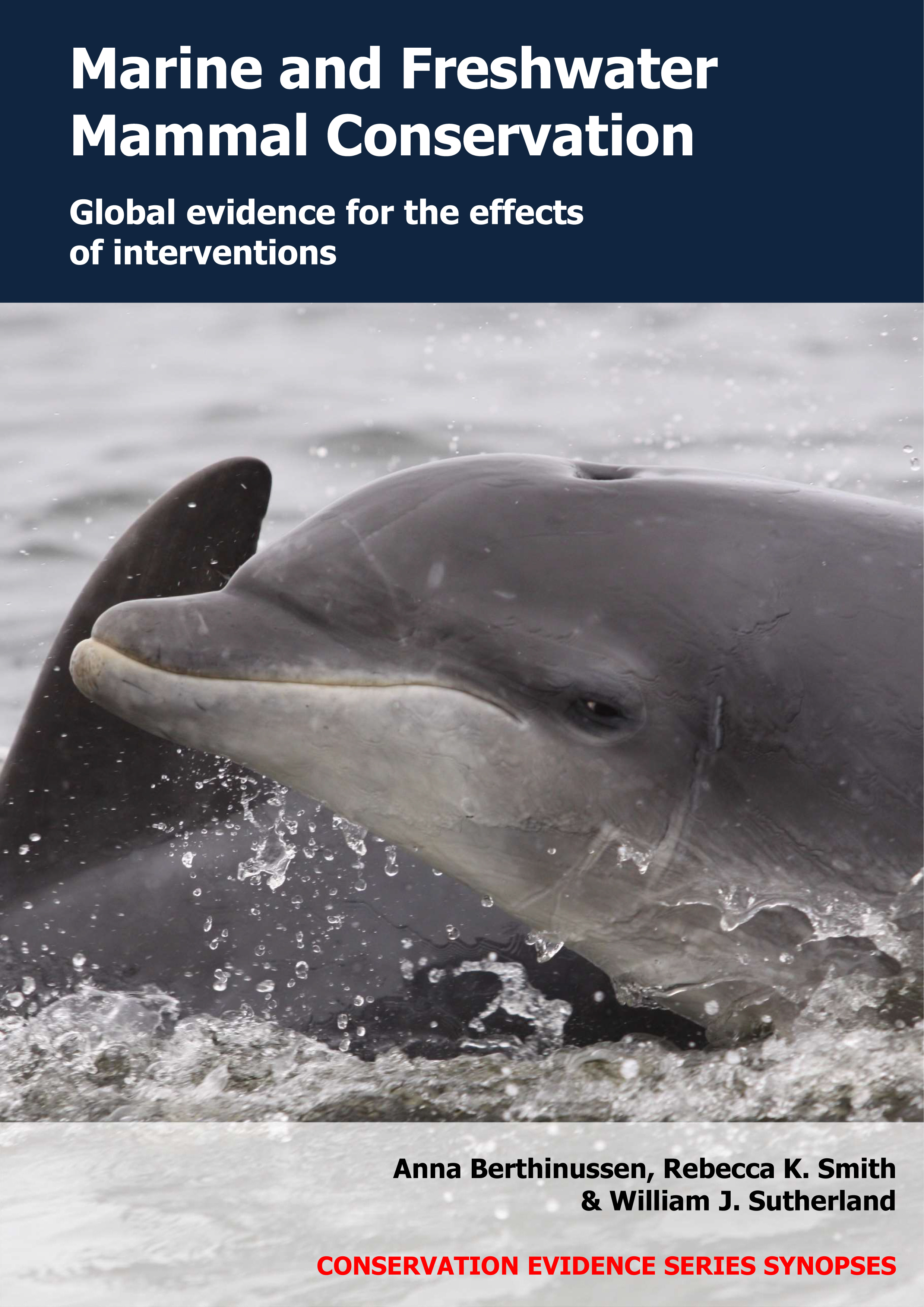Translocate marine and freshwater mammals to re-establish or boost native populations
-
Overall effectiveness category Likely to be beneficial
-
Number of studies: 4
View assessment score
Hide assessment score
How is the evidence assessed?
-
Effectiveness
50% -
Certainty
50% -
Harms
15%
Study locations
Supporting evidence from individual studies
A review of multiple translocations in 1994–2009 in the North Pacific Ocean, Hawaii, USA (Baker et al. 2011) found that translocated Hawaiian monk seal Monachus schauinslandi pups had similar survival rates and dispersal times to non-translocated seal pups born at release sites. The first-year survival rate of 161 translocated seal pups (45%) was similar to that of non-translocated seal pups born at release sites (43%). The average minimum time between weaning and dispersal of seal pups to other sites was also reported to be similar for 72 translocated pups (43 days) and non-translocated pups born at release sites (data not provided). Hawaiian monk seal pups were translocated between islands in 1994–2009 to reduce the risk of shark predation and male aggression, or to be fostered. Survival was estimated for 291 pups (161 translocated; 130 non-translocated) born in 1997 and 2001–2008. Dispersal times were estimated for 72 seal pups translocated in 1994–2009 and non-translocated pups born at release sites (number not reported). All translocations were part of a long-term research programme. Seal populations were monitored during annual field camps for 2–5 months in the spring and summer in 1994–2009.
Study and other actions testedA replicated study in 1984–2005 of multiple sites on islands in the North Pacific Ocean, Hawaii, USA (Gilmartin et al. 2011) found that nearly all translocated Hawaiian monk seal Monachus schauinslandi young, and approximately half of rehabilitated and translocated monk seal young, survived for at least one year after release and some reproduced. Five of six translocated monk seal young (83%) were known to survive for at least one year. Thirty-five of 68 rehabilitated and translocated monk seal young (52%) were known to survive for at least one year after release, 18 of which reproduced in the wild (at least 68 pups in 1984–2005). Thirty other rescued monk seal young died in captivity (17 seals) or were kept permanently in captivity for health or behavioural reasons (13 seals). In 1984–1995, a total of 104 weaned, female seals (aged <3 years old) that were underweight, ill or threatened (by human disturbance, shark predation or aggressive adult male seals) were translocated directly to new sites (six seals) or brought into captivity for 3–14 months before release at new sites (98 seals). Captive seals were given medical treatment and fed milk formula or fish with multivitamins. The seals were transported between islands by plane or ship, and either released immediately or held in beach enclosures before release. All released seals were tagged and observed annually in 1984–2005.
Study and other actions testedA review of interventions in 1980–2012 for Hawaiian monk seals Monachus schauinslandi in the North Pacific Ocean, Hawaii, USA (Harting et al. 2014) found that translocating seals, along with at least seven other interventions to enhance survival, resulted in 139 of 532 (26%) seals surviving and reproducing. The study did not distinguish between the effects of translocation and the other interventions carried out. The 139 surviving seals (including 71 females) produced at least 147 pups, which went on to reproduce (15 pups). In 2012, the number of surviving seals and their offspring were estimated to make up 17–24% of the seal population (198–271 of 1,153 seals). In 1980–2012, a total of 885 intervention events of seven types were carried out: translocation (284 events); removal of derelict fishing gear from seals (275 events); rescue of stranded or trapped seals (37 events); pups reunited with mothers (113 events); umbilical cord removed or other medical treatment (84 events); other actions, such as deterring aggressive male seals (120 events). Field biologists monitored the seal population in 1980–2012. Data were analysed for 532 individual seals facing severe mortality risks and involved in 698 of the 885 intervention events.
Study and other actions testedA controlled study in 2008–2011 at two islands in the North Pacific Ocean, Hawaii, USA (Norris et al. 2017) reported that at least half of translocated Hawaiian monk seal Neomonachus schauinslandi pups survived their first year, and survival rates were greater than those of non-translocated pups remaining at the original site. Results are not based on assessments of statistical significance. At least six of 12 seal pups (50%) survived to one year of age after translocation. Survival of translocated seal pups was higher than that of non-translocated seal pups remaining at the original site (11 of 36 pups, 31%). However, the authors state that survival estimates may not be reliable due to small sample sizes and low survey effort at the release site (<1% of that at the original site). In August 2008 and 2009, twelve newly weaned seal pups (average 78 days old) were translocated 450 km to an island with better foraging conditions to improve their chances of survival. Attempts were made to re-sight the 12 translocated seal pups and 36 non-translocated seal pups of the same age during surveys. Biannual surveys were carried out at the release site during a total of 12 days in 2009–2011. Surveys of non-translocated pups were carried out at the original site in 2009–2011 (details not reported).
Study and other actions tested
Where has this evidence come from?
List of journals searched by synopsis
All the journals searched for all synopses
This Action forms part of the Action Synopsis:
Marine and Freshwater Mammal Conservation
Marine and Freshwater Mammal Conservation - Published 2021
Marine and Freshwater Mammal Synopsis





)_2023.JPG)














